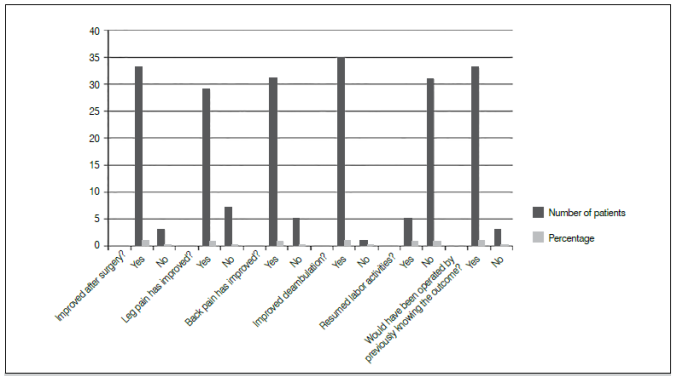ABSTRACT
Objective:
To identify the patient profile that obtains better clinical and quality of life improvement after lumbar spinal stenosis surgery, comparing the results in the pre and postoperative periods.
Methods:
Thirty-seven patients with lumbar spine stenosis submitted to surgery were prospectively evaluated. Through the 36-Item Short Form General Health Survey (SF-36) questionnaire we performed a preoperative analysis to identify morbidities and social security benefit earning. The SF-36 is a subjective postoperative questionnaire to assess surgical success six months after the surgery.
Results:
There were unfavorable outcomes in patients who received social security benefits and in those who had morbidities. According to the SF-36 score, the surgical result is better when the patient is non-smoker (p=0.05), non-hypertense (p=0.040), non-diabetic (p =0.010) or non sedentary (p=0.019), respectively on mental health, pain, social aspects and general health domains.
Conclusion:
The patient profiles that best benefit from the surgery are those who do not have morbidities and had no social security benefit. Evidence Level II, Prospective Study.
Keywords:
Spinal stenosis; Risk factors; Treatment outcome

 Thumbnail
Thumbnail
